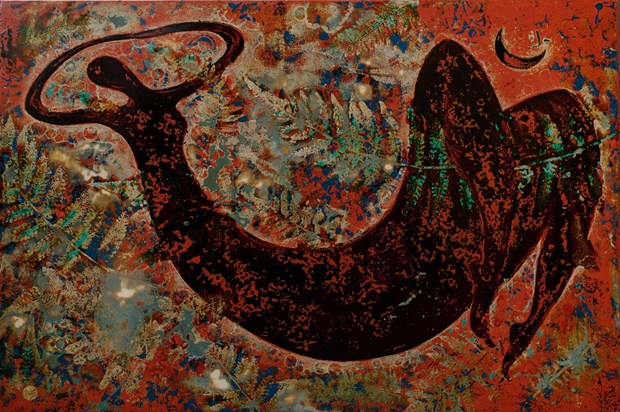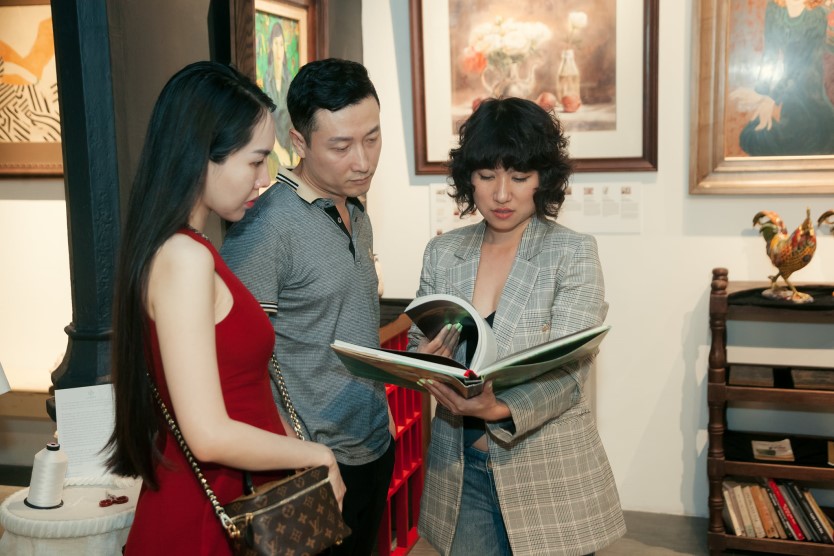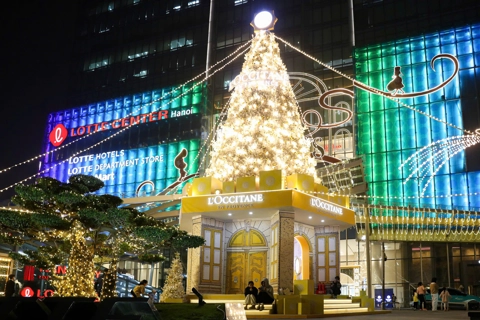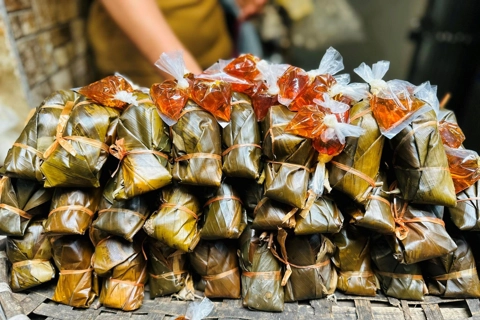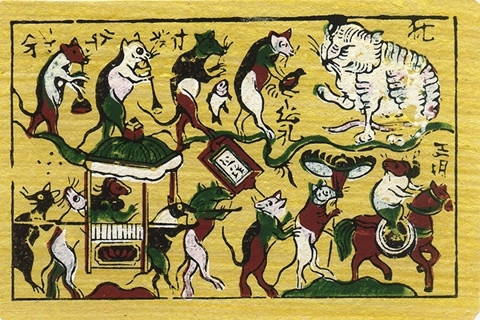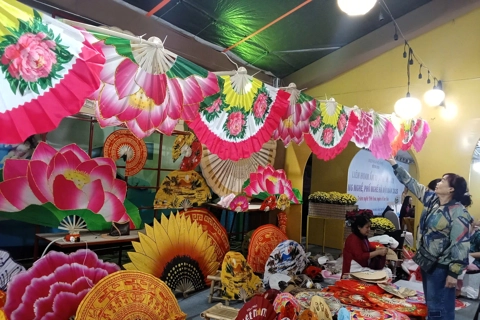Stroll through the Lacquer Land of 10 renowned artists in Hanoi
The artist explores lacquer in their own way, bringing exciting experiences to the art-loving public.
The exhibition entitled Stroll through the Lacquer Land will be held in Hanoi, presenting nearly 30 works by 10 famous lacquer artists.
The exhibition featuring unique artistic perspectives and some opposite will run from August 2 to 8 at the Vietnam Fine Arts Museum, 66 Nguyen Thai Hoc, Hanoi.
| Quan Am Thi Kinh painted by Phan Cam Thuong. |
Painter Phan Cam Thuong, whose artwork is on display in the exhibition, said he made the lacquer the way people made ancient Buddha statues.
"Ancient lacquer takes a long time to dry, but it gives an effect as transparent as water. But in the end, you have to understand that lacquer is a way of drawing, not a material, and the material alone means nothing in creating artworks," the artist said.
Painter Ly Truc Son is a talented artist who discovered his painting skills early in life, at 12. He is the founder of the "Son Ta" (Wax Tree) group and is recognized by many colleagues around the world as the leading painter of contemporary lacquer art.
"People say I draw unreservedly, but I work with an iron discipline. I draw each picture with respect and care, even over and over again, to achieve the desired artistic effect. I work very hard. I always know that I haven't reached where I want to be, that place is always in front of me," said painter Ly Truc Son.
| Ly Truc Son's painting Galaxy. |
Painter Trieu Khac Tien is the only lacquer artist in Vietnam with a Ph.D. He defended his thesis at the Tokyo University of Fine Arts, Japan.
"When I had a chance to study Japanese lacquer art and witnessed how this art was presented, preserved and developed through historical periods, I wanted to standardize the painting techniques of Vietnamese lacquer art to increase its durability and value," Tien said.
According to curator Van Vi, lacquer painting is honored as a miracle of Vietnamese fine arts. Comprehending the field of lacquer painting is like taking a gentle walk, leaving time to savor and capture the eclectic approaches of lacquer art amid its evolutionary process.
Vietnamese lacquer painting has existed for centuries, but it was not until the establishment of L'Ecole des Beaux-Arts de l'Indochine (the Indochina College of Fine Arts, now known as the Vietnam University of Fine Arts) in 1925 that artists began to transform lacquer from a craft to an artistic invention.
At first, Indochinese artists tried to paint lacquer using oil painting techniques taught by French professors, but their efforts were in vain. This realization sparked the need for a different approach to the new material.
| Silent night by Trieu Khac Tien. |
Among the pioneer generation, one name most people knew was Nguyen Gia Tri, whose style followed expressionism.
Due to the influence of the second director of the Indochina College of Fine Arts, Evarite Jonchère, the fashion of the second-generation lacquer painters Le Quoc Loc, Hoang Tich Tru and Pham Hau was more of a decorative style to utilize the strengths of traditional Vietnamese art.
It's acknowledged that the third generation, especially painters Nguyen Sang and Nguyen Tu Nghiem, had redefined the concept of composing with lacquer paint.
"From these insights, one can ask what the fourth generation is contributing to this contemporary art and how it is progressing. We don't seek answers to these questions but rather bring them into the discussion by exhibiting paintings from various northern lacquer sects," said Van Vi.
| Curator Van Vi is preparing for the exhibition. Photo: The Hanoi Times |
"While strolling, we can hardly notice all the details, let alone the whole scene. This limitation relieves our minds and brings us to a state of calmness to fully perceive our surroundings. Likewise, this exhibition may miss some important artists and leave the mysteries to art scholars," she said.
Curator Van Vi acknowledged that each of these artists is currently on a path to explore lacquer from unique artistic perspectives. Some are the opposite, namely the conventional and the unorthodox, being reactive and conversing with materials, standardized techniques before implementation, and vice versa. "We savor the fruits of their artistic labors, along with their amalgamation as well as distinction, for the eyes of viewers," she said.



